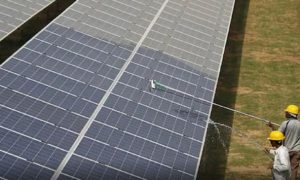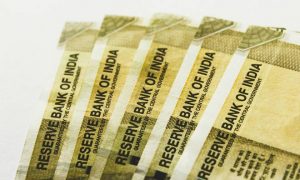While the southern states have emerged as major contributors to India’s GDP, states like West Bengal, once economically strong, have witnessed a puzzling decline, according to a working paper released by the Economic Advisory Council to the Prime Minister.
A working paper from the Economic Advisory Council to the Prime Minister (EAC-PM), released on Tuesday, has revealed significant disparities in the economic performance of Indian states.
While the southern states — Karnataka, Andhra Pradesh, Telangana, Kerala, and Tamil Nadu — have emerged as major contributors to India’s GDP, states like West Bengal, once economically strong, have witnessed a puzzling decline.
Southern states make up 30% of India’s GDP
In 1991, the per capita income of the five large southern states was below the national average. However, the liberalisation of India’s economy brought rapid growth, allowing these states to surge ahead.
By March 2024, these states accounted for 30% of India’s GDP. Karnataka, with its booming tech sector, and Tamil Nadu, with its industrial hubs, have been pivotal in this growth.
Read More: Aadhar Card for NRIs: Applying For An Aadhaar Card Just Got Simpler | Check Step-By-Step Guide
Telangana, India’s youngest state formed in 2014, has also shown impressive economic performance, becoming a major player in India’s economy.
West Bengal’s sharp economic decline
In stark contrast, West Bengal, once a top contributor to India’s GDP with a share of 10.5% in 1960-61, now accounts for only 5.6%.
The state’s per capita income, which was once 127.5% of the national average, has dropped to 83.7%. This decline places it below states like Rajasthan and Odisha, which have traditionally lagged behind.
Read More: Low On Balance? UPI Lite To Soon Have Auto Top-up Feature Launching On October 31 — All About It
“West Bengal has experienced a continuous decline in its relative economic performance over several decades,” the report said.
Despite its strategic maritime location and historical advantages, West Bengal’s economic trajectory has been one of steady decline.
Experts are puzzled by the state’s inability to maintain its early economic strength. The report highlights West Bengal as an anomaly among maritime states, most of which have prospered.
Read More: NPS Vatsalya for minors to be introduced today: Check scheme details, benefits and more
The question of what went wrong in West Bengal, particularly with its industrial policies, has been a subject of debate. The state’s political climate, which shifted drastically after liberalisation, may have played a role in its economic stagnation.
Punjab’s and Haryana’s contrasting paths
Punjab, once a beneficiary of the Green Revolution, has also experienced a flattening of economic growth since 1991. The state’s per capita income, which had risen to 169% of the national average by 1971, has now declined to 106%.
In contrast, Haryana has seen a sharp rise in per capita income to 176.8%, with much of this growth occurring after 2000.
The divergence between Punjab and Haryana is striking, as Haryana, once economically behind Punjab, has now overtaken it in key economic metrics.
Read More:- Cash deposit made easy: Bank of Baroda, Axis Bank roll out UPI-ICD facility
Maharashtra still tops GDP but faces challenges
Maharashtra remains India’s largest contributor to GDP, though its share has declined from over 15% to 13.3% in recent years. Home to the financial capital, Mumbai, the state’s per capita income grew to 150.7% of the national average by 2024. However, the state no longer ranks among the top five in terms of per capita income.
Poorest states struggle to keep pace
The report also highlights the challenges faced by the poorest states. Uttar Pradesh, once contributing 14% of India’s GDP in 1960-61, now accounts for 9.5%.
Bihar, despite being the third-most populous state, contributes only 4.3% to the national economy.
While Odisha has shown marked improvement, shedding its image as a laggard, Bihar remains far behind other states in terms of economic growth.
Read More: Bank holiday: Are banks closed for Eid-e-Milad, Ganesh Visarjan next week? Check details here
The report suggests that states have taken dramatically different economic paths since liberalisation.
The southern states have capitalised on the reforms, driving national growth. However, the case of West Bengal stands out as an unresolved economic puzzle, as the state continues to fall behind despite its early promise.
With these regional disparities widening, the report calls for deeper investigation into the policies and factors influencing state-level economic growth.





































